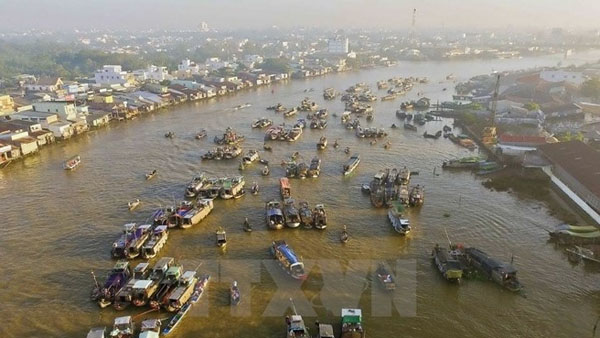


|
The Cai Rang floating market (Photo: VNA) The event
marks one year since the "Culture of the Cai Rang Floating Market” was
recognised as a national intangible cultural heritage.
A number
of activities will be held during the three-day festival, including a
composite boat race, a parade of tourism boats, and the making of
record-sized banh xeo (a type of savory crepe) – a specialty of southern
Vietnam.
The
festival will also feature the display of local delicacies, cultural
activities and folk games.
Vice
Chairman of the Cai Rang district People’s Committee Vuong Cong Khanh said
the festival aims to popularise the image of the Cai Rang Floating Market as
a tourism highlight of the city. It is also a chance for travel companies to
create tours to attract visitors to Can Tho.
The Cai
Rang Floating Market, located about 6km from the centre of Can Tho city, has
been around for centuries. It is a prime example of the waterway market
culture in the southwestern region, where people buy and sell goods on boats.
About 200
– 250 waterway vehicles engage in buying and selling activities at the market
every day with agricultural products being the main goods. About 2,000 tonnes
of products are sold and bought at the market each day, generating over VND 3
billion (US$132,000) in daily revenue.
The Cai
Rang Floating Market has long been a tourism brand of Can Tho and assessed as
an attractive destination by both domestic and foreign tourists.
|
Source: NDO